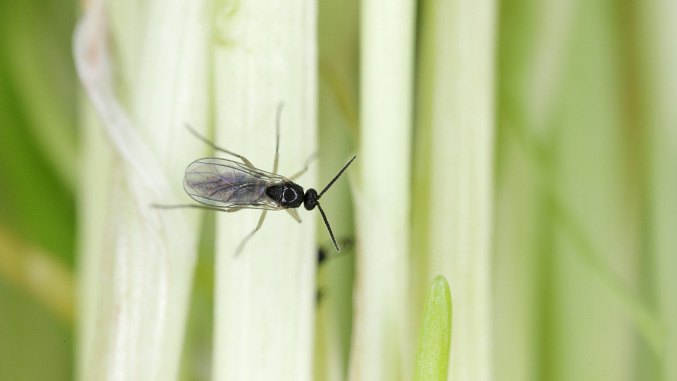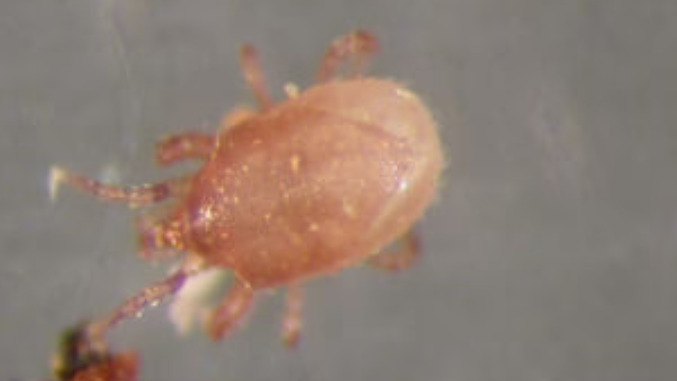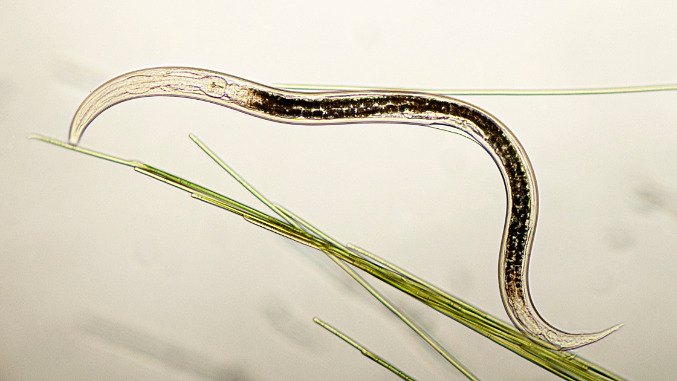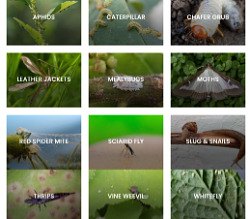
How to control sciarid flies in peat-free compost
5 Minute Read
In this article you'll find everything you need to know about controlling sciarid flies in peat-free growing media with biological controls.How to control sciarid flies in peat-free compost
Various pests make peat-free compost their home. Expert Garden Supplies team advocates a solution which is both effective and harmonious with the sustainable ethos of peat-free growing: biological controls. Here we'll explain atheta beetles, predatory mites and nematodes, what they do to get rid of pests, and how to use them. Sciarid fly, also known as fungus gnat, thrive in a moist, rich environment provided by peat-free compost. Their larvae feed on organic matter and plant roots, causing significant harm to plant health. The need to control these pests is paramount for successful growing in peat-free compost.
There are three different biological controls that you can introduce specifically for sciarid fly populations.
• Atheta beetles
• Predatory mites
• Nematodes
• Atheta beetles
• Predatory mites
• Nematodes

Atheta beetles
A group of rove beetles naturally inclined to prey on sciarid fly larvae and eggs, making them an efficient and ecologically sound solution for controlling sciarid fly populations. These tiny beetles and their larvae voraciously hunt down the eggs and larvae of the sciarid flies, thereby reducing their population and plant damage.Breeding Atheta beetles for pest control
Breeding atheta beetles as a form of biological control aligns perfectly with the sustainability offered by peat-free media. Their breeding process is relatively straightforward, with just a few important considerations:• Environment: Atheta beetles favour the same cool, damp environment as sciarid flies, making them well-suited to indoor and greenhouse conditions.
• Food: In the absence of sciarid larvae or eggs, atheta beetles can be sustained on a diet of yeast or other protein-rich sources.
• Breeding medium: A breeding medium consisting of damp peat or compost offers a favourable habitat for atheta beetles, providing a protected space for the beetles to lay their eggs and for the larvae to grow.
• Lifespan and breeding cycle: The lifecycle of atheta beetles, from egg to adult, is approximately three to four weeks. Adult beetles can live for several months, laying hundreds of eggs in their lifespan, making them a self-sustaining pest control solution.
• Food: In the absence of sciarid larvae or eggs, atheta beetles can be sustained on a diet of yeast or other protein-rich sources.
• Breeding medium: A breeding medium consisting of damp peat or compost offers a favourable habitat for atheta beetles, providing a protected space for the beetles to lay their eggs and for the larvae to grow.
• Lifespan and breeding cycle: The lifecycle of atheta beetles, from egg to adult, is approximately three to four weeks. Adult beetles can live for several months, laying hundreds of eggs in their lifespan, making them a self-sustaining pest control solution.
By understanding the habitat and lifecycle of these helpful beetles, you can breed your own armies of them, providing a safe and effective way to keep sciarid fly populations under control while promoting healthier and more resilient plant growth.
How do atheta beetles work?
Staphyline AC is a pack of adult and larvae of the Staphylinid beetle. The beetles are roughly 2-3mm and feed on the larvae and adults of a range of pests. They generally control sciarid and shore flies. They are generalist feeders, but adults and young stages are particularly good at feeding on the larvae of fungus gnats and shore flies.The Staphyline formulation contains both adults and larvae for a balanced population. They are a visible predator and adults are mobile which results in good dispersal and establishment. Staphylinid beetles are tolerant of a wide range of temperatures, humidity, light, irrigation and soil conditions which allows them to a be a suitable predator year-round in the greenhouse.
How to apply
Rotate the tube several times before opening to mix the contents and push the cut-out on lid where it is marked to open the tube, rotate lid cover to fully open position for application. Shake the contents gently onto your soil and any areas where flies are thought to be breeding.Keep the pack in darkness at 10-15°C until ready to use and use within 18 hours of receipt.

Predatory soil-dwelling mites
Hypoaspis miles, also known as Stratiolaelaps scimitus, is a species of soil-dwelling predatory mite. It is widely used in horticulture as a biological control agent for managing various pest populations, particularly soil-dwelling insects and mites.The mites are small, barely visible to the naked eye, and have a light brown to tan colour. They are beneficial because they feed on a variety of harmful pests, including fungus gnats, thrips larvae, root aphids, and other small insects and mites that reside in the soil. These predatory mites are particularly effective in controlling pests in the early stages of their life cycle.
When introduced into the soil or compost, the mites actively search for prey, consuming the pest larvae and eggs, helping to reduce populations and prevent plant damage. They are considered a safe and environmentally friendly alternative to chemical pesticides.
How do predatory mites work?
Hyposapsis miles are usually found within the top inch of compost. The females lay eggs which hatch approximately six days later. Once hatched, the larvae feed actively for 10 days and feed continuously as adults.They are able to survive with low moisture levels, adults are also reported to live for several months and survive up to 50 days without food, making them ideal even if there are low pest populations. Mites will often move onto plants from growing media to look for prey at night.
How to apply
The mites are supplied in a tube. Rotate the tube several times before opening to mix contents, and remove the cap from one end of the tube. Incorporate mite larvae into growing media during potting or sprinkle onto growing media surface. The predatory mites will quickly distribute uniformly through your plants.
Nematodes
This species of insect-parasitic nematodes (Steinernema feltiae) are beneficial organisms, widely used in agriculture and horticulture as a biological control to manage various soil-dwelling insect pests.Nematodes are microscopic, unsegmented roundworms that have a symbiotic relationship with specific bacteria called Xenorhabdus bovienii. The nematodes infect and kill their insect hosts by releasing the bacteria into its body, which eventually kills the pest. Once the host insect dies, the nematodes reproduce inside its carcass, and the next generation emerges to find new hosts.
These nematodes are particularly effective against various soil-dwelling pests, including sciarid flies, shore flies, root aphids, and other insect larvae. Nematodes are well-suited for controlling pests in the larval stage. When using them as a biological control, they are typically applied to the compost where the target pests reside. The nematodes actively seek out and infect the pests, providing an environmentally friendly alternative to chemical pesticides and helping to maintain a balanced ecosystem.
How do nematodes work?
Exhibitline nematodes swim freely through moist compost (but they can drown if waterlogged), and are attracted to insect larvae and enter the body where a pellet of bacteria is released that kills the pest organism. Exhibitline can control fungus gnats and other compost / soil living pests such as larvae / pupae.Best used generally as a curative treatment in a temperature range of 12°C to 25°C.
How to apply
The nematodes are supplied in a small packet or a tub, depending on the amount purchased, and will contain the product instructions. Please ensure you refer to these for the best mixing and application method for your affected plants, and should you need any advice, please contact us for assistance.
*Please note: for orders containing live creatures, we will not accept returns on unwanted items or orders placed by mistake, due to the perishable nature of the goods.
View all natural pest controls

Choose your pest
Natural pest controls, sometimes called organic pest control or biological pest control, are easy and safe to apply in your garden or greenhouse.The use of natural predators to control garden pests is environmentally friendly and effective. Choose the pest from our helpful list using the button below.
FIND OUT MORE
Tags: Natural Pest Control, organic pest control, Peat-free
Comments (0)
Why not be the first to send us your thoughts?
Leave A Comment
Most popular articles
1
Plastic plant pots dimensions and uses2
Peat vs Peat Free - Choosing the right Potting Compost3
How to Grow Watercress at home in plant pots4
January Jobs5
Our guide to seed sowing compost